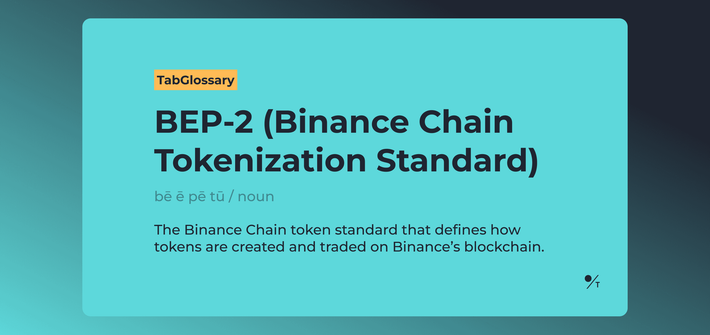What Is BEP-2 (Binance Chain Tokenization Standard)?
BEP-2 is the official set of rules for creating and managing tokens on Binance Chain, Binance’s original blockchain. It defines how tokens should be built, transferred, and traded, ensuring everything works smoothly within the Binance ecosystem. Think of it as Binance’s version of Ethereum’s ERC-20 standard.
Understanding BEP-2 tokens
Every BEP-2 token comes with a clear identity:
- A name,
- A symbol
- A set supply.
Developers minting these tokens on Binance Chain need to stake some Binance Coin (BNB) as a fee, which isn’t just a toll. It also helps keep the network secure and efficient. In short, BEP-2 gives projects a structured way to plug into Binance’s ecosystem without reinventing the wheel.
BEP-2 in the Binance ecosystem
Where BEP-2 really shines is in trading. These tokens can move easily across Binance’s platforms, especially on Binance DEX, and they can represent just about anything, from stablecoins to utility tokens. Because they’re native to Binance, they come with built-in liquidity and fit seamlessly into the exchange’s trading environment.
Practical uses
BEP-2 tokens aren’t just theory. Projects use them for tokenized assets, DeFi experiments, and even reward systems. The standard is simple enough for newcomers but robust enough for big projects, which is why so many developers lean on it when building on Binance Chain. Fast, cheap, and easy, three things devs don’t complain about.
Why it matters
BEP-2 might not grab headlines like Bitcoin or Ethereum, but it quietly powers a lot of Binance’s ecosystem. It keeps things standardized, makes token trading smooth, and lays the groundwork for interoperability. In a space that moves this fast, having a clear, reliable standard is a lot more important than it might sound at first glance.




